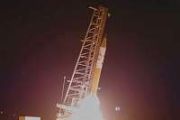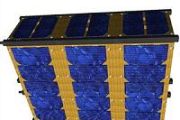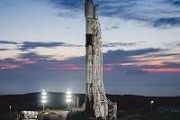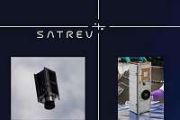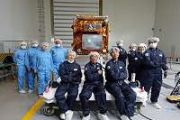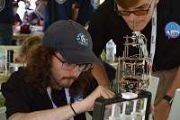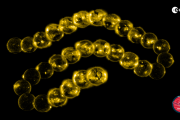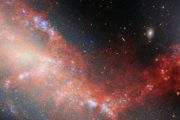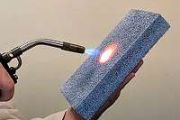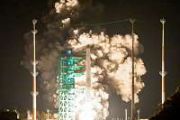
Copernical Team
Pentagon and Partners Release Combined Space Operations Vision 2031
 The United States joins Australia, Canada, France, Germany, New Zealand, and the United Kingdom in the joint release of the "Combined Space Operations (CSpO) Vision 2031" today.
CSpO is an initiative to address the overarching need to encourage responsible use of space, recognizing challenges to space sustainability, threats presented by technological advances, and the increasingly compreh
The United States joins Australia, Canada, France, Germany, New Zealand, and the United Kingdom in the joint release of the "Combined Space Operations (CSpO) Vision 2031" today.
CSpO is an initiative to address the overarching need to encourage responsible use of space, recognizing challenges to space sustainability, threats presented by technological advances, and the increasingly compreh Earth from Space: Washington, US
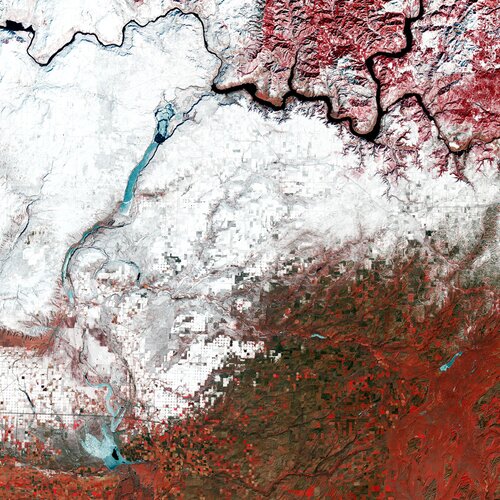
To celebrate the recent data release from Landsat 9, this week we take a closer look at a part of Washington state – the northwesternmost state of the US – through the lens of Landsat 9.
Successful first year for UK-Australia Space Bridge
 This week marks the first anniversary of the Space Bridge between UK and Australia - a partnership focused on facilitating collaboration between the two countries' space sectors. A world first, the Space Bridge has unlocked improved access to trade, investment and academic research opportunities, better advice to businesses and innovative bilateral collaborations.
The arrangement enhances
This week marks the first anniversary of the Space Bridge between UK and Australia - a partnership focused on facilitating collaboration between the two countries' space sectors. A world first, the Space Bridge has unlocked improved access to trade, investment and academic research opportunities, better advice to businesses and innovative bilateral collaborations.
The arrangement enhances Astronomers map mysterious element in space
 A research team led by Lund University in Sweden has provided an important clue to the origin of the element Ytterbium in the Milky Way, by showing that the element largely originates from supernova explosions. The groundbreaking research also provides new opportunities for studying the evolution of our galaxy. The study is published in Astronomy and Astrophysics.
Ytterbium is one of four
A research team led by Lund University in Sweden has provided an important clue to the origin of the element Ytterbium in the Milky Way, by showing that the element largely originates from supernova explosions. The groundbreaking research also provides new opportunities for studying the evolution of our galaxy. The study is published in Astronomy and Astrophysics.
Ytterbium is one of four Roman Space Telescope could snap first image of a Jupiter-like world
 NASA's Nancy Grace Roman Space Telescope, now under construction, will test new technologies for space-based planet hunting. The mission aims to photograph worlds and dusty disks around nearby stars with detail up to a thousand times better than possible with other observatories.
Roman will use its Coronagraph Instrument - a system of masks, prisms, detectors, and even self-flexing mirrors
NASA's Nancy Grace Roman Space Telescope, now under construction, will test new technologies for space-based planet hunting. The mission aims to photograph worlds and dusty disks around nearby stars with detail up to a thousand times better than possible with other observatories.
Roman will use its Coronagraph Instrument - a system of masks, prisms, detectors, and even self-flexing mirrors Ch'al-Type Rocks at Santa Cruz
 NASA's Perseverance Mars rover snapped this view of a hill in Mars' Jezero Crater called "Santa Cruz" on April 29, 2021, the 68th Martian day, or sol, of the mission. About 20 inches (50 centimeters) across on average, the boulders in the foreground are among the type of rocks the rover team has named "Ch'al" (the Navajo term for "frog" and pronounced "chesh"). Perseverance will return to the ar
NASA's Perseverance Mars rover snapped this view of a hill in Mars' Jezero Crater called "Santa Cruz" on April 29, 2021, the 68th Martian day, or sol, of the mission. About 20 inches (50 centimeters) across on average, the boulders in the foreground are among the type of rocks the rover team has named "Ch'al" (the Navajo term for "frog" and pronounced "chesh"). Perseverance will return to the ar Sols 3396-3397: Sediment Before the Pediment
 If all goes according to plan, the rover's drive on sol 3397 will position us at the edge of the rocks that cap Greenheugh Pediment. This drive was pushed back from sol 3395 in order to collect even more data on the sedimentary rocks in our current workspace before we leave this rock formation and enter into a new one. This transition is documented in the Mastcam drive direction image above, in
If all goes according to plan, the rover's drive on sol 3397 will position us at the edge of the rocks that cap Greenheugh Pediment. This drive was pushed back from sol 3395 in order to collect even more data on the sedimentary rocks in our current workspace before we leave this rock formation and enter into a new one. This transition is documented in the Mastcam drive direction image above, in Organic compounds on Ceres
 The third-largest crater on the dwarf planet Ceres was geologically active at least once many millions of years after its formation. In a recent study published in the journal Nature Communications, researchers from the Max Planck Institute for Solar System Research (MPS) in Gottingen, the University of Munster (WWU) and the National Institute of Science Education and Research (NISER) in Bhubane
The third-largest crater on the dwarf planet Ceres was geologically active at least once many millions of years after its formation. In a recent study published in the journal Nature Communications, researchers from the Max Planck Institute for Solar System Research (MPS) in Gottingen, the University of Munster (WWU) and the National Institute of Science Education and Research (NISER) in Bhubane HSE University researchers discover what happens on the bright side of the moon
 Researchers from HSE University have developed a mathematical model that explains the levitation of charged dust particles over the sunlit lunar surface for almost any latitude. For the first time, the model takes into account the Earth's magnetotail-a particular area around our planet. The research data is important for planning the Luna-25 and Luna-27 space missions. The study was published in
Researchers from HSE University have developed a mathematical model that explains the levitation of charged dust particles over the sunlit lunar surface for almost any latitude. For the first time, the model takes into account the Earth's magnetotail-a particular area around our planet. The research data is important for planning the Luna-25 and Luna-27 space missions. The study was published in NASA plans mid-March test for SLS moon rocket's first flight
 NASA officials said Thursday the space agency is making progress toward a crucial test in mid-March of the first moon rocket since the Apollo-era but the agency did not set a new launch date for the first lunar mission.
NASA plans the full "wet-dress rehearsal" of the SLS moon rocket on the pad at 6 p.m. ET on March 17.
The first such mission to the moon, although uncrewed, may h
NASA officials said Thursday the space agency is making progress toward a crucial test in mid-March of the first moon rocket since the Apollo-era but the agency did not set a new launch date for the first lunar mission.
NASA plans the full "wet-dress rehearsal" of the SLS moon rocket on the pad at 6 p.m. ET on March 17.
The first such mission to the moon, although uncrewed, may h 





